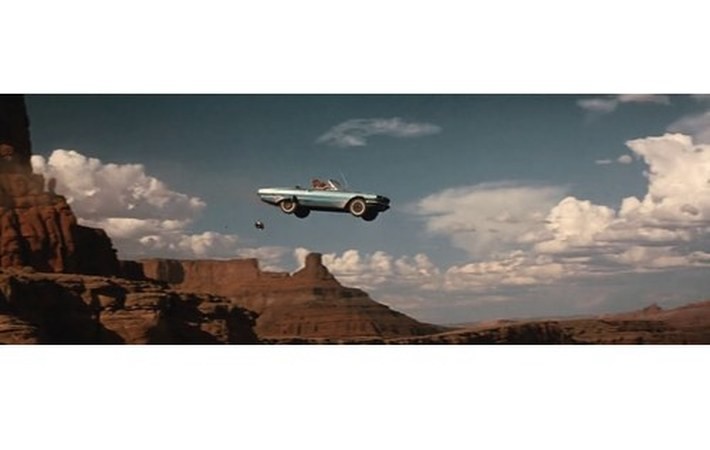
Published on 11/22/2016 | Market Sizing
This time last week I was swooping through the skies in a helicopter, circling and landing in the Grand Canyon. I know what you’re thinking, what relevance does this have to the IoT and IBM? To be honest not a lot, I just really like telling people about my trip!
But, of all the years I could have selected to finally embark on this amazing experience, I chose 2016 to fly over the Canyon and Colorado River. Was it because 2016 was the 25th anniversary of the release of Thelma & Louise, one of the all time greatest films to be set near the Grand Canyon? Well, no. It was a coincidence. But what a coincidence. One that made me start thinking about what could have been if Thelma & Louise had been released now instead of 25 years ago…
Released in 1991 to much critical acclaim, an excellent example of a buddy movie, road trip, crime drama, and landmark feminist film all rolled up into one. It was nominated for six Academy Awards including Best Actress for both Geena Davis and Susan Sarandon. But the true star of the show is Louise’s 1966 Ford Thunderbird Convertible.
The Ford Thunderbird is at the centre of all the action, and whilst it’s a cool car, it isn’t a smart car. So what would happen to the Thelma & Louise storyline if their car had been a connected vehicle. Not completely out of the question given the new European regulation stating that all cars from April 2018 must be eCall enabled.
I don’t want to give too much away to those that haven’t yet seen Thelma & Louise, but honestly where have you been? Stop reading this, go and watch it before I ruin the ending! But for those of you that have, here are my thoughts on how IoT and connected cars could have ruined the story of Thelma & Louise…
• In the early part of the story there is an ‘incident’ in a car park. Some smart cars have in-built cameras that could have recorded what happened. That footage could have helped juries and police with their investigations.
• The main road trip of the movie is from Oklahoma to Mexico when Thelma & Louise go on the run. They stop on the way to pick up Brad Pitt, the con-man hitchhiker. In the new connected world he could have just got an Uber after the facial recognition system in the car told them not to offer him a ride.
• The smart car would have mapped the quickest and most efficient route to Mexico. Highlighting the best hotels, motels, and restaurants to stop off at on the way.
• The car would have also texted Thelma’s controlling husband Darryl, to keep him up to date with the progress they were making on their journey.
• It would have stopped automatically at police checkpoints, leading to their arrest earlier in the movie.
• And the automatic breaking system would have made for a much less poignant and dramatic final scene at the Grand Canyon.
This is just a fun way of showing how IoT can and will have an impact on everyday life (or in this case dramatic Hollywood life). IBM has lots of other real-life examples for smart vehicles, including Ollie and connected commuting, and another on the development of connected cars.
This post was originally published on IBM's IoT blog, by Lynne Slowey (Twitter: @lynslow)